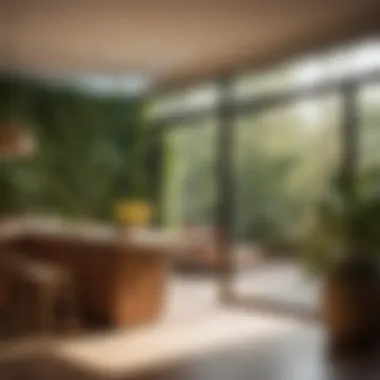Materials:
- Lumber: Purchase high-quality 2x4 and 2x6 boards, ensuring you have precise measurements for the added room's dimensions.
- Drywall: Acquire enough drywall sheets based on the square footage of the room addition, along with joint compound and drywall screws.
- Insulation: Invest in insulation rolls or panels suitable for your region's climate to optimize energy efficiency.
- Electrical Wiring: Secure necessary wiring, outlets, switches, and lighting fixtures, adhering to local building codes.
- Flooring: Select durable flooring material such as hardwood, laminate, or tile, considering both aesthetics and practicality.
- Windows and Doors: Choose energy-efficient windows and doors that complement your home's design while providing security.
- Roofing Materials: If extending the roof, source matching shingles, underlayment, and flashing for a seamless integration.
DIY Steps:
- Planning: Begin by outlining the room's purpose, layout, and design, considering natural light and traffic flow.
- Permits: Obtain necessary permits from local authorities before commencing any construction to avoid legal complications.
- Foundation: Ensure a sturdy foundation by following recommended excavation and concrete pouring guidelines.
- Frame Construction: Assemble the frame according to architectural plans, aligning walls and adding support beams as required.
- Roofing and Exterior: Install roof trusses and sheathing, followed by siding or exterior finishes for weather protection.
- Interior Finishing: Complete electrical wiring, insulation, drywall installation, painting, and trim work to achieve a polished look.
Technical Aspects:
- Tools: Prepare a range of tools including a circular saw, drill, hammer, tape measure, level, and safety gear for efficient construction.
- Timing Specifics: Coordinate construction phases to optimize workflow, allocating ample time for each task to ensure precision.
- Critical Techniques: Master skills such as mitering corners, electrical wiring, and drywall finishing for professional results.
DIY Project Process:


- Sequential Steps: Follow a systematic approach from foundation laying to interior detailing, maintaining a strict timeline for each phase.
- Troubleshooting Tips: Anticipate common challenges like uneven walls, electrical faults, or plumbing issues, offering solutions proactively to maintain project momentum.
This detailed guide provides a comprehensive roadmap for planning, executing, and enjoying the results of your room addition project, combining practical insights with expert recommendations for a successful DIY endeavor.
Factors Impacting the Cost of Room Additions


When considering the cost of room additions, various factors come into play, influencing the overall expenses significantly. This section delves into key elements that can impact the financial aspects of expanding living space. Understanding these factors is crucial in planning and budgeting for a room addition project. By exploring the size of the addition, material selection, labor costs, design complexity, and permit requirements, individuals can make informed decisions to manage costs effectively.
Size of the Addition
Square Footage
The square footage of a room addition is a pivotal aspect that directly correlates to the overall cost of the project. Larger square footage generally means more materials, labor, and time required for construction, leading to higher expenses. Homeowners should carefully assess their space needs and budget constraints to determine the ideal square footage for their room addition. While a spacious addition offers enhanced living areas, it is essential to balance size with budget considerations to ensure cost-effectiveness.
Number of Rooms
The number of rooms being added also plays a significant role in determining the cost of a room addition. Each additional room increases the complexity of the project, requiring more materials, labor, and structural adjustments. Homeowners should prioritize their requirements and consider the practicality of adding multiple rooms based on budget constraints and long-term functionality. Balancing the number of rooms with cost considerations is essential to avoid unnecessary expenses.
Ceiling Height
Ceiling height is another aspect that contributes to the cost of a room addition. Higher ceilings not only enhance the aesthetics of the space but also involve extra structural work and materials, impacting the overall expenses. Homeowners opting for vaulted or raised ceilings should be prepared for increased costs associated with the added height. While taller ceilings can create a sense of openness and grandeur, it is essential to weigh the benefits against the financial implications to make an informed decision.
Material Selection
Quality of Materials
The quality of materials chosen for a room addition significantly influences the project's cost and overall outcome. High-quality materials may come at a premium price but offer durability, longevity, and aesthetic appeal. Homeowners should prioritize the durability and sustainability of materials to ensure the longevity and value of their room addition. While quality materials enhance the overall look and functionality of the space, they may entail higher initial costs but result in long-term savings and satisfaction.
Specialized Features
Incorporating specialized features into a room addition adds a layer of personalization and functionality but can also impact the project's cost. Unique features such as custom cabinetry, smart home technology, or energy-efficient appliances enhance the living experience but require careful consideration of budget constraints. Homeowners should evaluate the necessity and long-term value of specialized features to strike a balance between functionality and cost-effectiveness. Prioritizing essential features while being mindful of the budget is key to successful material selection for a room addition.
Labor Costs
Skilled Workers
The expertise of skilled workers significantly influences the quality and cost of a room addition. Hiring experienced professionals ensures craftsmanship, adherence to building codes, and efficient project management. While skilled workers may demand higher wages, their precision and expertise contribute to the overall success of the project. Homeowners should prioritize skilled labor to guarantee a well-executed room addition that meets their expectations and safety standards.
Timeframe for Completion
The timeframe for completing a room addition is a crucial aspect that affects labor costs. Efficient project timelines not only reduce labor expenses but also minimize disruptions to daily life. Homeowners should establish realistic timelines in consultation with contractors to ensure efficient progress and timely completion. Delays in project completion can lead to additional labor costs and inconvenience, underscoring the importance of setting clear expectations and milestones for the construction process.
Design Complexity
Architectural Features
Integrating architectural features into a room addition adds character and visual interest but can elevate the project's complexity and cost. Unique architectural elements such as arched doorways, skylights, or custom moldings require specialized skills and materials, contributing to higher expenses. Homeowners should carefully consider the impact of architectural features on the overall budget and aesthetic vision to make informed design choices. Balancing design complexity with cost considerations is essential to achieve a harmonious and cost-effective room addition.
Structural Changes
Making structural changes during a room addition project impacts both design complexity and costs. Structural modifications like removing walls, adding support beams, or altering foundation elements entail additional time, labor, and materials. Homeowners contemplating structural changes should consult with professionals to assess the feasibility and cost implications of such alterations. While structural modifications can enhance the functionality and layout of the space, careful planning and budgeting are imperative to ensure a successful and economical room addition.
Permit Requirements
Local Regulations
Adhering to local regulations and permit requirements is paramount when undertaking a room addition project. Failure to obtain necessary permits can result in fines, delays, or even legal consequences. Homeowners should familiarize themselves with local building codes and permit procedures to ensure compliance throughout the construction process. Consulting with authorities and professionals can streamline the permit acquisition process and avoid complications that may add unexpected costs to the project.
Inspections
Inspections are a critical component of the permit process and play a vital role in ensuring the safety and quality of a room addition. Professional inspections verify that the construction meets regulatory standards and building codes, safeguarding against potential hazards and structural deficiencies. Homeowners should schedule inspections at key project milestones to address any issues promptly and maintain compliance with building regulations. Prioritizing inspections not only reinforces the structural integrity of the room addition but also mitigates risks associated with non-compliance and costly revisions.
This section provides a detailed exploration of the factors impacting the cost of room additions, ranging from size and material selection to labor costs, design complexity, and permit requirements. By understanding these key elements and their contributions to overall expenses, homeowners can effectively plan, budget, and execute successful room addition projects.
Estimating Room Addition Costs


Estimating room addition costs is a crucial aspect when considering expanding your living space. In this detailed section, we will delve into the specific elements that play a role in determining the overall financial outlay for a room addition project. By understanding the key factors comprising room addition costs, such as material selection, labor expenses, and design complexity, homeowners can make informed decisions regarding their budget allocations. Through a comprehensive estimation of room addition costs, individuals can set realistic financial expectations, plan effectively, and ensure a smooth progression of their project.
Initial Budgeting
Researching Costs
Researching costs is an essential stage in the initial budgeting process for a room addition project. This step involves collecting data on material prices, labor rates, and potential expenses related to permits and design elements. By conducting thorough research, homeowners can obtain a clear picture of the financial feasibility of their project and make well-informed decisions regarding budget allocation.
Setting Realistic Expectations
Setting realistic expectations is pivotal in the initial budgeting phase as it helps homeowners align their financial goals with the projected costs of the room addition. By establishing achievable expectations based on researched data and industry standards, individuals can avoid potential budget overruns and ensure a financially viable outcome for their project.
Detailed Quotes
Comparing Contractor Bids
Comparing contractor bids is a critical step in the estimation process, allowing homeowners to evaluate different pricing structures and services offered by various contractors. By comparing bids, individuals can select contractors that not only fit within their budget constraints but also provide quality workmanship and adherence to project timelines.
Understanding Breakdown of Costs
Understanding the breakdown of costs provides homeowners with transparency regarding the allocation of expenses in their room addition project. By grasping the individual components contributing to the overall cost, individuals can assess the value of each aspect and make informed decisions on potential cost-saving measures.
Contingency Planning
Allocating Extra Funds
Allocating extra funds ensures that homeowners have a financial buffer to address unforeseen expenses or modifications that may arise during the room addition process. By setting aside additional funds for contingencies, individuals can mitigate financial risks and maintain the progress of their project without major disruptions.
Preparing for Unexpected Expenses
Preparing for unexpected expenses involves anticipating potential cost deviations from the initial budget and developing strategies to address them effectively. By proactively planning for unforeseen financial challenges, homeowners can navigate unexpected costs with resilience and maintain the financial integrity of their room addition project.
Strategies to Reduce Room Addition Costs
In this section of the article, we delve into essential strategies to reduce room addition costs. As individuals embark on the journey of expanding their living space, it becomes paramount to consider ways to make the process more cost-effective. By exploring smart approaches to minimize expenses without compromising on quality, homeowners can achieve their room addition goals within budget constraints.
DIY vs. Professional Services
Feasibility of DIY Projects
The feasibility of DIY projects plays a pivotal role in the decision-making process for room additions. Homeowners often contemplate whether to take on certain tasks themselves or opt for professional services. DIY projects provide the opportunity for individuals to save on labor costs and exercise creativity in the project execution. By assessing the complexity of the addition, personal skill set, and time availability, homeowners can determine the feasibility of DIY projects. While DIY projects can offer a sense of accomplishment and potential cost savings, they may also require significant time investment and certain technical expertise.
Benefits of Hiring Experts
Conversely, hiring experts for room additions brings a level of professionalism and efficiency to the project. Experts possess the skills, experience, and tools necessary to streamline the construction process and ensure high-quality results. By entrusting the project to professionals, homeowners can benefit from precision engineering, adherence to building codes, and timely completion. While hiring experts may come at a higher initial cost, it often leads to superior craftsmanship, minimized errors, and peace of mind. The expertise of professionals can also add value to the property and enhance the overall aesthetic appeal of the room addition.
Value Engineering
Value engineering is a critical aspect of cost reduction in room additions, focusing on optimizing resources without compromising functionality or aesthetics. This strategic approach involves exploring alternative materials and simplified design elements to achieve cost-efficient outcomes while maintaining quality.
Alternative Materials
Incorporating alternative materials in room additions presents an opportunity to lower costs without sacrificing durability or visual appeal. By researching cost-effective material options that align with the desired aesthetic, homeowners can make informed decisions to optimize their budget. Alternative materials such as recycled wood, composite decking, or pre-fabricated components offer cost savings while ensuring structural integrity and design cohesiveness.
Simplified Design Elements
Simplified design elements contribute to cost reduction by streamlining the construction process and eliminating unnecessary complexities. By prioritizing functional design aspects over intricate details, homeowners can create a visually appealing space at a fraction of the cost. Simplified design elements focus on minimalism, efficient use of space, and practicality. This approach not only enhances cost efficiency but also facilitates a smoother construction timeline and easier maintenance in the long run.
Efficient Space Planning
Efficient space planning is essential in optimizing room layouts and minimizing structural changes during the addition process. By strategically organizing the space and considering the flow of the room, homeowners can maximize usage while minimizing unnecessary alterations.
Optimizing Layout
Optimizing layout involves thoughtful consideration of furniture placement, traffic flow, and functional zones within the new space. By maximizing natural light, utilizing multifunctional furniture, and creating clear pathways, homeowners can enhance the usability and aesthetic appeal of the room addition. Optimal layout design not only improves the overall functionality of the space but also reduces the need for extensive structural modifications, thereby lowering construction costs.
Minimizing Structural Changes
Minimizing structural changes is a key cost-saving strategy that focuses on preserving the existing building framework whenever possible. By strategically integrating the new addition with the current structure and minimizing alterations to load-bearing walls or foundational elements, homeowners can avoid substantial expenses associated with structural modifications. This approach not only streamlines the construction process but also maintains the structural integrity of the property while staying within budget constraints.
Conclusion
This article sheds light on the intricate dance between costs and quality, emphasizing the need for a harmonious blend of affordability and craftsmanship. By delving into the nuances of budgeting and demonstrating the art of striking a delicate equilibrium between expenses and value, readers are equipped with the knowledge to navigate the often complex landscape of room additions. The conclusion acts as a guiding beacon, directing individuals towards a path of informed choices and prudent investments in their living spaces.
Final Thoughts
Importance of Budgeting
Delving into the realm of cost estimation for room additions unveils the pivotal role of budgeting as the cornerstone of financial prudence. The importance of budgeting lies in its ability to serve as a roadmap, guiding homeowners through the labyrinth of expenses and ensuring that financial constraints do not impede the realization of their dreams. By setting realistic financial parameters and meticulously tracking expenditures, budgeting empowers individuals to remain on course and make informed decisions that align with their fiscal capabilities.
Furthermore, budgeting fosters a sense of control and accountability, fostering a disciplined approach towards financial management throughout the room addition process. Its innate ability to provide a clear overview of projected costs and potential areas for savings enables homeowners to steer clear of budgetary pitfalls and unforeseen financial burdens, thus safeguarding the overall success of their renovation endeavors.
Balancing Costs and Quality
Achieving the delicate balance between costs and quality stands out as a paramount consideration when contemplating room additions. This equilibrium necessitates a judicious evaluation of priorities, where cost-effective measures do not compromise the integrity or functionality of the envisioned space. Balancing costs and quality entails a meticulous analysis of materials, labor expenses, and design elements to ensure that the final outcome reflects both durability and aesthetic appeal.
Moreover, this equilibrium underscores the importance of value-driven decision-making, where cost considerations are weighed against the long-term benefits and satisfaction derived from a well-executed room addition. By striking a harmonious equilibrium between costs and quality, homeowners can enjoy the fruits of their investment while basking in a living space that seamlessly integrates affordability with impeccable design and functionality.





